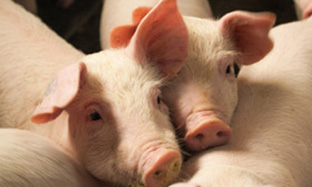
Biosecurity
Understanding Biosecurity
Understanding Biosecurity: How to prevent diseases and control spread inside the farm?
Marvin V. Pangilinan, DVM
Do you have Biosecurity Program and practices on your farm? How is your compliance? Are you certain that the Biosecurity measures in the farm has a level of implementations? During times of disease outbreaks, are you very strict? And during the problem-free times, you are getting very loose and tend to forget biosecurity practices. Some farms have what they called Biosecurity levels: Level 1, 2 & 3. Level 1 means low biosecurity practices; Level 2 is moderate and Level 3 is high. Biosecurity should have no level; it should only be a matter of YES or NO.
Biosecurity is a measure taken to prevent infectious organisms, fomites, mechanical vectors from entering, surviving, spreading and infecting the animals. The goal of Biosecurity is to prevent diseases from entering the operation and to prevent the spread of these diseases in case they had already entered the facilities. Regardless of the size of the operation, the basics are the same: control the movement of animals, people and equipment coming into the farm, and clean and disinfect as much as possible.
There are 2 Biosecurity practices; the external and the internal biosecurity. External Biosecurity objective is to maintain herd health status and avoid the entry of new pathogens. It includes isolation and testing of new animals, limitation and clear procedure of disinfection of visitors, a designation of delivery areas that prevent close contact if possible and strategic location of loading bays that requires minimum contacts between buyers and farm staff. Disinfection is always a necessity in these situations. Internal Biosecurity objective is to control the distribution/spread of existing diseases that are on the farm and reduce their incidence/cases where ever possible. It includes installation of footbaths, managing of foot traffic, practicing All-In, All-Out Production, and effective control program to keep out birds, rodents & other vectors.
As disinfection plays a necessary role in biosecurity; important information about it should be always considered. There are 3 types of disinfection2. Prophylactic, Concurrent, and Terminal disinfection. Prophylactic disinfection is a biosecurity strategy developed to prevent the introduction of a new pathogen to pig farm/houses. Example of this strategy using Virbaguard 1Kg3, Virbac peroxygen & organic acids disinfectant. Vehicle disinfection - 10g/Liter of water dilution; Foot Dip - 10g/Liter of water dilution. Concurrent disinfection is a strategy developed to reduce the spread of disease among pigs on premises already contaminated with a pathogen. Example of this strategy using Virbaguard 1Kg, Aerial disinfection - 5g/Liter of water dilution; Continuous water sterilization - 1g/Liter of water dilution. Terminal disinfection is a strategy developed to prevent the escape and spread of pathogens already present on pig premises in order to prevent spread to another population of animals. Example of this strategy using Virbaguard 1Kg, Terminal (final) disinfection - 10g/Liter of water dilution, Equipment disinfection - 10g/Liter of water dilution and Sanitation of water system at terminal clean out – 2.5g/Liter of water dilution.
Never take biosecurity for granted. How you practice it decides the success or failure of your animal production.
References:
1Jodi Sterle, et al. Biosecurity for Swine Producers
2Jeffrey M. Levengood, Leif Norrgren - 2012 - Animal ecology
3Virbaguard 1kg – Virbaguard Technical dossier, Virbac Philippines, Inc.


